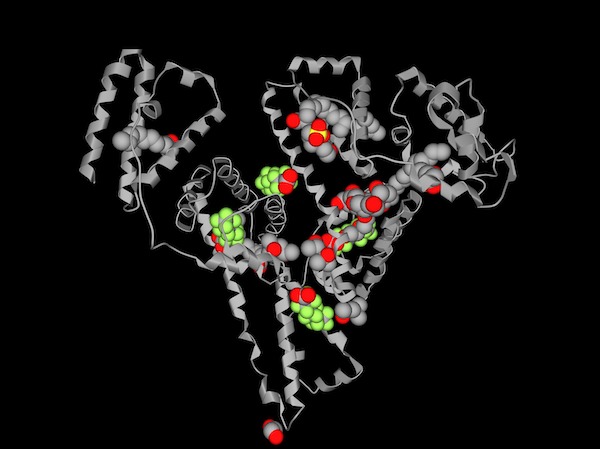
At Ca’ Foscari a science awareness project merges biochemistry, analytical chemistry and information technology to fight PFAS (perfluoroalkyl chemicals) pollution.
It is commonly known that pollution affects the ecosystem and human health – however, the task of raising public awareness of the effects of pollutants such as PFAS is challenging. These substances, which are impermeable to water and lipids, are extremely useful in the industrial field (such as in the production of nonstick pans, waterproof textiles, fire-fighting foams), but do not degrade easily and are therefore extremely polluting and harmful to the environment and human health.
“PFAS contamination has deeply affected our Region, as the campaigns promoted by Legambiente and Greenpeace starting in 2016 show. We are still facing this challenge. And yet, many people continue to ignore the effects of these pollutants. We need new tools and ways to divulge and popularise studies on the toxicity and dangerousness of PFAS”, say Professor Ligia Maria Moretto and PhD candidate Giulia Moro, who have been working on PFAS for several years.
What would happen if we could see how PFAS interact with our blood proteins on the screen of our smartphone? What if we could easily understand how PFAS accumulate in our bodies? These are the questions which sparked the idea of using a web application, XRmol, to divulge the results of the studies conducted in the laboratories of Professor Alessandro Angelini and Professor Laura Cendron (University of Padua) regarding the interaction between FAS (and in particular PFOA, perfluorooctanoic acid) and human albumin, an important plasma protein which is involved in the transportation of hormones and medication and that has been shown to be the means by which these pollutants enter the human body and accumulate in it.
“We believe that science awareness shouldn't amount to simplification – we want to create tools that enable the visualisation of the biomolecules we study, so that others can understand their complexity. This video is just the first example of what can be achieved”, say Sara Corazza and Giulia Moro, who created the YouTube channel InsideBiomolecules with XRmol and the video that shows the interaction between PFOA and albumin.
According to the members of the research team, there is great potential for raising public awareness of this information, especially in schools and universities. On the screen of our smartphones we can see what some of the fundamental proteins in our bodies, such as albumin and haemoglobin, actually “look like”; students can explore the DNA and discover its architectural details, thanks to an interactive whiteboard.
XRmol is one of the first prototypes of the Digital Health Lab. It is a web application that can be used to visualise proteins in an augmented virtual reality, thanks to the rendering of proteins and nucleic acids and of their interaction with small molecules (such as the interaction between proteins and medication). Visualisation in augmented reality is one of the first proposals in this sector and it opens up new and interesting possibilities in terms of daily use, both as as an additional tool, and as a means to facilitate collaboration and science awareness.
XRmol is available for PCs and mobile devices such as tablets and smartphones (Android and iOS). “The app has been designed to facilitate 3D visualisation of biomolecules, so that users can see the configuration of atoms in space. Even though this is still a prototype, XRmol is already being used in our research laboratories and is allowing us to see the most hidden details of biomolecules with just a few, simple clicks” says Sara Corazza, who has been supervised by Professor Marta Simeoni and Professor Fabio Pittarello of the Department of Environmental Sciences, Informatics and Statistics.
This initial science awareness project summarises the results of the scientific research which has already been published in accredited journals such as Analyst and Protein Science. These results have been possible thanks to a network of collaborators which includes Ca’ Foscari departments (DSMN and DAIS), the Department of Biology of the University of Padua, the European Centre for Living Technology, the University of Antwerp (Belgium) with the AXES research group and NANOlab Center of Excellence, the University of Leeds (UK) with the Astbury Centre for Structural Molecular Biology and the School of Molecular Biology.
This is only the beginning. In fact, the information collected has also been applied to the development of a biosensor for the monitoring of PFOA levels in water; the results of this study have been published in Bioelectrochemistry. The research group Laboratorio di sensori elettrochimici of Ca' Foscari's DSMN has been working on the development of PFAS sensors for years: in 2019 it patented a sensor that can determine the presence of PFOS (perfluorooctanesulfonate acid).
“We believe that visualisation can help anyone to gain a more practical understanding of the effects that these pollutants have on our bodies and to appreciate the importance of our studies”, says Professor Alessandro Angelini.
This scientific awareness project – which started somewhat casually when two students, Sara Corazza and Giulia Moro, met and became enthusiastic about it – highlights the importance of interdisciplinary collaboration and the value of scientific collaboration among research groups in fields that are traditionally considered to be separate and distant for our university.
Follow the development of this project on LinkedIn: #PFASensing, #XRmol, #InsideBiomolecules









